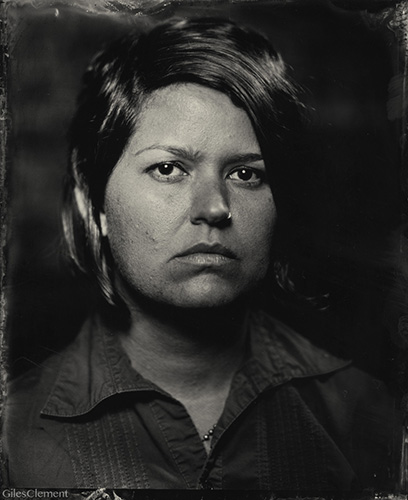
June 14 – July 31, 2021
On::View Residency, Sulfur Studios, Savannah, GA
I am fortunate to be spending the next month exploring a new body of work that not only satisfies some new technical directions, but helps me conceptually process the last 15 months of these challenging times. Anyone in the Savannah area who would like to be photographed as part of the project can sign up here — my last day for sitters is July 9. Below is my proposal, written on March 20, 2021, explaining my impetus for the project.
“I plan to use this residency as a way to ease back into interaction with the wider public after a year of strict Covid-induced isolation, and to pose questions about trust and welfare within our society. The actions involved in the creation of this work will be just as crucial as the resulting art pieces. The final outcome will be a series of portraits created through the experimental photographic process of chemigrams. I plan to use the space as a photo studio to photograph willing participants as I hold a discussion with them about the ways in which the pandemic has changed their interactions with others.
With my husband being at high risk for complications from Covid-19, we took our last unnecessary foray into public on March 13, 2020. As a social person who charges her batteries by sitting in coffeeshops with her laptop to do work, I feel like a certain part of my brain has had to shut down in order to get through the lack of physical interaction. Another part of my brain has overpowered these needs – what I refer to as “darkroom variable brain” – where I learned how any and every small step of creating a traditional photographic print in a darkroom all factor into its visual outcome. The virus has pushed me into levels of control which I would have mocked over a year ago, as darkroom variable brain now dictates all my possible risks of being in public, and ways that I might be putting my husband and other vulnerable people at risk. Having recently been vaccinated, I can finally see an end to this daily impediment, but I know that I won’t be able to just hop back into public with the flip of a switch and undo the year of conditioning I have placed upon myself to feel physically safe.
As a photographic artist, portraiture has never been a comfortable subject for me. But as I try to crawl out of isolation and force myself into the uncomfortable position of being back in public, no other subject seems more fitting to tackle as I fully push myself out of my comfort zone. As I deal with high levels of mistrust due to peoples’ behavior during the pandemic and their ability to impact the lives of others, I feel I must force myself to hold in-person conversations with others. This is not only to share in and express the trauma we have all experienced, but to record a visual document of my time spent physically among people. To do this I will manipulate the controls of my camera to lengthen to exposure times. Therefore the portraits will not be strict representations of each person’s likeness, but lengthened exposures of multiple seconds resulting in an abstracted likeness of the person. Like many of my collage pieces which take words, cut the letterforms, and abstract them into a new form to embed the word’s power, in this project I make photographs to embed the passage of time over which the conversation took place, as proof of my own action towards healing. I intend to ask my sitters a series of questions concerning what has changed in their lives over the course of the pandemic, specifically in the realm of their understanding of and trust in others. I hope the conversations may grow organically into whatever topics are comfortable.
The outcome of these prints will not be traditionally-printed photographs, but will take on another level of transformation by using the chemigram process. Chemigrams are silver gelatin (light-sensitive) prints that are made without negatives or a darkroom, but simply by applying various substances (resists) to the paper in order to create imagery akin to drawings or paintings. The paper is processed in traditional developer and fixer chemicals in normal daylight to create a final stable visual outcome. For many years I have been planning to use screenprinting as a method of applying the resist, so that I might return to photographic imagery in my work. Chemigrams are a way to free myself from predictable outcomes in my artwork, given the many variables that can influence how the images take form in terms of their color, value, texture, and line quality. In this case, chemigrams also serve as a way to separate myself further from expectations of portraiture, and perhaps to even touch on my ambiguous feelings about being physically present with my subjects, as I very slowly accept the “new new normal” of being able to be in close interaction with other people again. As I dance with my comfort levels, portraiture is the push and the chemigram process is the pull.”

